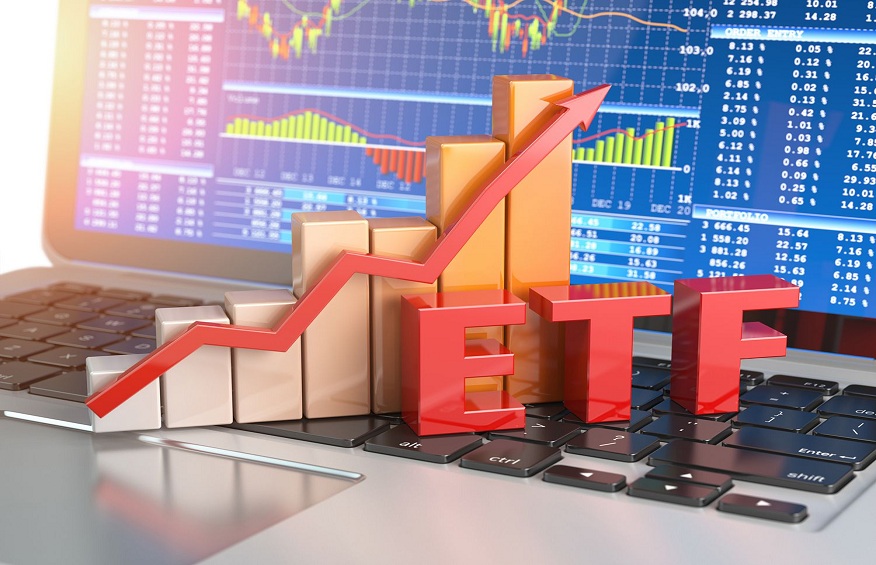
Understanding index ETFs: Investing in the market’s performance
As the stock market continues to grow and evolve, investors are presented with many options for investing in equities. One investment vehicle that has gained significant popularity recently is index exchange-traded funds (ETFs).You might be asking yourself, what is ETF trading? These passive funds seek to track the performance of a specific market index, allowing investors to gain exposure to a variety of stocks at a lower cost than traditional mutual funds.
However, navigating the world of ETFs can be daunting for even the most seasoned investor. This article will explore understanding index ETFs and how they can be essential to your overall investment strategy.
Popular stock and bond index ETFs
Regarding investing in stock and bond markets, exchange-traded Funds (ETFs) have become famous for investors due to their versatility and cost-effectiveness. Among the various ETF investments available, the ones that track popular stock and bond indices are particularly sought after by investors seeking diversification and exposure to broader markets.
Some of the top ETFs in this category include the Vanguard Total Stock Market ETF, which tracks the entire U.S. stock market; the iShares Core MSCI EAFE ETF, which gives exposure to non-U.S. developed markets; and the iShares Core U.S. Aggregate Bond ETF that invests in U.S. investment-grade bonds. For those looking to invest in specific sectors, some ETFs track technology, healthcare, consumer goods, and other categories.
Passive investing benefits of index ETFs
Index-based ETFs have gained popularity among long-term investors due to their low-cost and hands-off exposure to broad market segments. These passive investing vehicles accurately track significant market indices, comprehensively representing the market segment they cover. Index-based ETFs are particularly useful for investors looking to diversify their portfolios with minimal effort to manage their investments actively.
The low expenses of index-based ETFs make them more accessible to retail investors who otherwise might not invest in stocks, bonds, or other asset classes. By investing in a diverse range of securities, index ETFs mitigate risk and provide a valuable instrument for investors to generate a steady return over time.
Index ETFs are not identical to their underlying indexes
Index ETFs, or exchange-traded funds, are popular investment options among many investors. While they are designed to closely track their underlying benchmark indexes, they differ due to several factors. One such factor is tracking error, which occurs for various reasons, including the cost of buying and selling securities, dividend payments, and fees such as management and trading costs.
Tracking errors can accumulate over time, leading to performance differences between the ETF and the benchmark index. Moreover, market movements, liquidity, and volatility can also affect the ETF’s performance, especially in the short term. Thus, investors must keep track of these factors to understand and evaluate the ETF’s performance and its deviation from the benchmark index over time.
Considerations for building an index ETF portfolio
ETF trading, or exchange-traded fund trading, involves buying and selling shares of ETFs that track certain market indexes; for investors looking to build an index ETF portfolio, asset allocation and diversification are vital considerations. Allocating funds across multiple asset classes, such as stocks, bonds, and real estate, can help manage risk and increase potential returns.
Balancing low-cost funds with diversification across different market segments can also provide a well-rounded portfolio. It is essential to consider the desired level of diversification and risk tolerance before making investment decisions. Building an index ETF portfolio that aligns with an investor’s goals and preferences requires careful planning and research to ensure a successful outcome.
Index ETF alternatives for specific investment goals
Investors seeking to diversify their portfolios or achieve specific investment goals have many options beyond traditional index ETFs. The iShares Russell 2000 ETF (IWM) and Vanguard Small-Cap ETF (VB) are famous for those seeking small-cap exposure. Income investors can generate consistent returns using the iShares Select Dividend ETF (DVY) or Vanguard High Dividend Yield ETF (VYM).
For those interested in socially responsible investing, the SPDR S&P 500 Fossil Fuel Reserves Free ETF (SPYX) and iShares MSCI KLD 400 Social ETF (DSI) represent options for environmentally and socially conscious investors. Investors can design portfolios that meet their unique investment goals by targeting specific objectives with targeted ETFs.
Evaluating index ETF expenses and portfolio turnover
When investing in index ETFs, evaluating expenses and portfolio turnover is essential to keep costs as low as possible. Investors can minimise costs by choosing ETFs with minimal ongoing fees and infrequent rebalancing activities and ensure that their investments are not unnecessarily churned. While fees may seem small, they can add up over time and significantly impact returns. Additionally, frequent portfolio turnover can also increase transaction costs and tax consequences.
In conclusion
Index ETFs offer investors a low-cost, hands-off way to gain broad market exposure and build a diversified portfolio. However, investors must understand the factors that may cause slight performance differences between the ETF and its underlying benchmark index. When making an index ETF portfolio, careful asset allocation and diversification considerations are also essential. By targeting specific investment goals with targeted ETFs and keeping expenses and portfolio turnover low, investors can potentially maximise their chances of achieving long-term success in the market.


